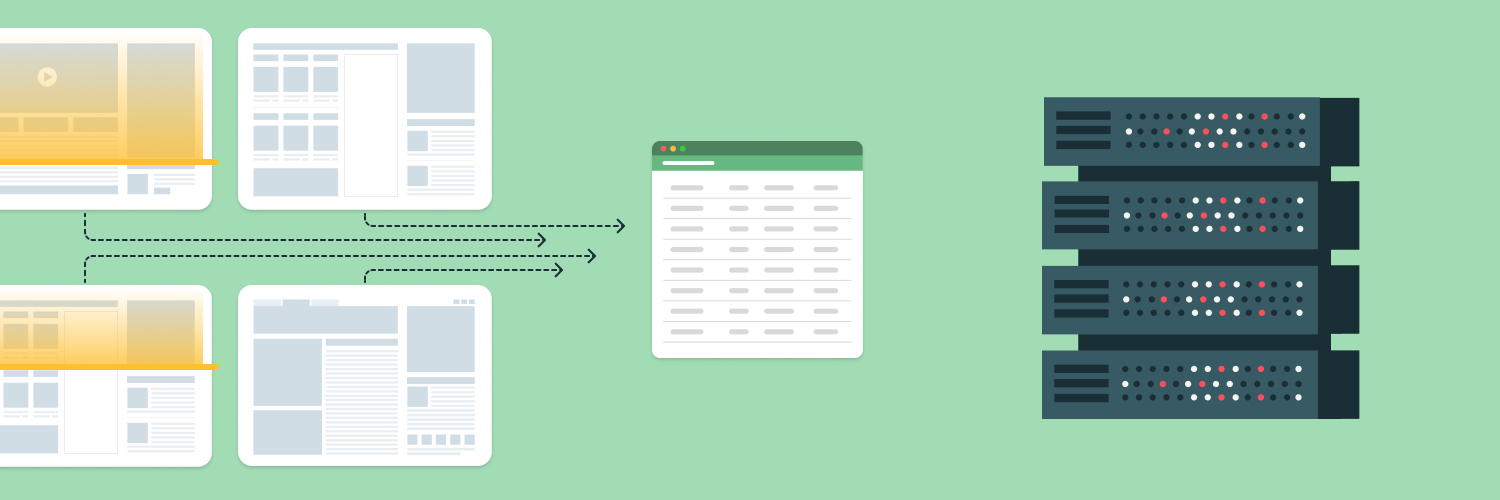What’s The Difference Between Data Mining, Text Mining, and Sentiment Analysis?
Data sentiment analysis can be a very helpful tool for businesses or others who want to understand more than the surface information provided in text. Sentiment analysis refers to the process of analyzing digital text to understand the emotional tone behind it, whether that tone is positive, negative, or neutral.
Data mining, text mining, and sentiment analysis are all closely related terms, but they are very different in terms of how they work and the types of information they provide.
Looking For Proxies?
Residential, datacenter, mobile… we’ve got everything you need!

To help you know what the difference is and how you may use any component of this massive amount of detail, we created this guide to break down even the most complex data into valuable insights you need to choose the right methods for building your understanding of valuable information.
What Is Data Mining in Data Sentiment Analysis?

Data mining refers to the process of discovering patterns, trends, and relationships within structured datasets. This is done using statistical and machine learning methods. Many companies use data mining to provide insight that can play a role in:
- Business intelligence
- Fraud detection
- Predictive analytics
Data mining enables you to gather useful information from large datasets. In other words, we take raw data from various resources and turn it into actual useful data that you can then analyze and apply to your business objectives or goals.
For example, a company may wish to use data mining as a way to capture information about their customers’ needs to help improve their marketing methods. With the help of structured data, it is possible to look for patterns in that information that could provide new avenues for reaching customers.
Note that data mining can be useful in a wide range of industries. That includes everything from finance to healthcare, retail, and manufacturing. Many companies use it to help with prediction – knowing when customers will need products or what materials to have on hand. It can also be used for classification, clustering, and association rule mining.
What Is Text Mining in Data Sentiment Analysis?

Text mining is a subset of data mining. It focuses specifically on unstructured text data. Its processes enable the extraction of meaningful information through techniques like natural language processing and keyword analysis. Text mining is often applied to:
- Search engines
- Document classification
- Topic modeling
Text mining uses artificial intelligence technology to process the data from various text documents. It focuses heavily on the use of deep learning algorithms to do this. What makes it different from data mining is that the data is stored in an unstructured manner. To work, the process must use linguistic principles to evaluate the language.
Some of the most common applications of text mining include aiding in sentiment analysis, named entity recognition, and topic modeling. It can pull this information from texts in various formats, such as social media posts, emails, and documents.
A good way to see the difference between data mining and text mining is to look at the data. Text mining transforms unstructured text into a structured format that can be used for decision-making. That’s quite important since a large amount of data available today is in an unstructured format, and without text mining, it is not as accessible as it could be.
Various types of text analysis techniques are available to use, all of which will provide a better understanding of critical data. Some of the most common you will see include these:
- Text classification: This type of text mining categorizes text into predefined classes or categories based on its content or specific characteristics.
- Text extraction: This process will identify and extract specific details of information in a larger format to be further analyzed or summarized later.
- Word frequency: Another method used in text mining is word frequency, which will determine how frequently a specific word appears within the dataset. This could provide valuable insights into common words important to that topic.
- Clustering: Clustering is the process of grouping similar data points together based on the similarities in the data.
As you can see, text mining is quite thorough in the ways it can work. Yet, it is still just organizing information. It may not provide you with enough detail about what the text means in terms of emotions or feelings.
What Is Sentiment Analysis Itself?

Sentiment analysis is a specific, specialized form of text mining. Its objective is to determine the emotional tone behind the text. To do this, natural language processing and machine learning are used to categorize sentiments. It does so by assigning those segments with a positive, negative, or neutral rating. Sentiment analysis is particularly beneficial in the following ways:
- Customer feedback
- Social media opinions
- Brand reputation
The real value of data is not just to understand what it says but to understand what it means. This is where datasets for sentiment analysis become so important. With sentiment analysis, which is also known as opinion mining, we use natural language processing to classify data into:
- Positive
- Neutral
- Negative sentiments
It can be tricky to see the difference between text mining (or data mining overall) and sentiment analysis. However, understanding this enables you to use data science sentiment analysis to make better decisions.
When we use a dataset for the sentiment analysis process, we are looking at the emotion behind the text. This gives you true information that you can then use to make decisions that will ultimately impact your customer, build your brand, or help you stand out from the competition.
The following are some types of sentiment analysis techniques:
- Graded data sentiment analysis: This process evaluates the sediment present in text based on a scale. It helps to show the intensity of the emotion that is expressed in the text, often on a scale of 1 to 5.
- Emotion detection: Most commonly used in data sentiment analysis, emotion detection looks for specific expressions of emotion within the text. This could include anger, fear, happiness, or sadness, for example.
- Aspect-based sentiment analysis: In this method, the focus is on using specific entities in the data to provide a granular understanding of feelings or opinions based on specifically selected aspects.
- Multilingual datasets for sentiment analysis: This method will look at the emotions and sentiments expressed in more than one language, providing a more global scale of what feelings are experienced.
Comparing Dataset for Sentiment Analysis Differences in Text and Sentiment Analysis

To better see the differences between data mining, text mining, and sentiment analysis, let’s take a more comprehensive look at them. First, note that data mining is the overall, over-arching process. It is the goal of capturing information to make decisions from based on the text provided.
Now, let’s compare datasets for sentiment analysis and text mining to see the differences.
What it does: Text mining takes information written by your customers or others about a product or service, gathers ideas that are common between the texts, and shows which subjects are most discussed. With sentiment analysis, the goal is to review data to rate it based on whether it is positive, negative, or neutral. It is also possible to capture information such as video, audio, and images from non-text forms.
How it works: Text mining uses NLP technology to process text-based data much like your brain does. This is done using a proprietary algorithm to identify specific words, speech, or ideas. It helps you to determine patterns and trends within the database. Sentiment analysis works by determining whether the words presented have a positive, negative, or neutral tone, providing a scale to determine where the emotion stands within the product’s opinion or service.
How does it help your business: With text mining, you can pinpoint information that provides a warning to you about what could happen in the future with your organization. For example, it allows you to see what customers are talking about or what their problems with a product have been across the board. With sentiment analysis, you can use positive scores as guidance while also using negative scores to help you make changes to key areas of concern, like customer experience or product and service churn.
The Technical Insights You Need for Data Preprocessing in Sentiment Analysis

Let’s take a step back for a moment to discuss a critical component of this process – the data! Data science sentiment analysis focuses heavily on data, information that you obtain from various sources. It is key to remember that you cannot get accurate information to make decisions with unless you have a good resource of data to compare and analyze. There are several steps we encourage when doing this.
Utilize web scraping: To get the dataset for sentiment analysis, apply the process of web scraping. Web scraping allows you to create a program that will find the information you need on a website or other resource and then catalog it for later use. In short, web scraping lets you pull information from the web to use for various tasks.
Looking For Proxies?
Residential, datacenter, mobile… we’ve got everything you need!

To engage in web scraping, you will need to build a web scraper (or use a tool that is ready to go for you). Once you have a tool in place telling it what to do, it will navigate the sites you tell it to in an effort to capture the data you need. It then takes that data and imports it where you can later analyze it. If you have not done so yet, check out a few web scraping projects that will give you an idea of what you can do. You can automate web scraping to do this work for you in the background, keeping you fully up to date throughout the process.
Implement proxy services: The secondary step to take before you start working on datasets for sentiment analysis is to use a proxy service. From data preprocessing in sentiment analysis onward, you must take steps to protect your identity in this process. Using a rotating proxy service can help you to do that.
A proxy is a type of intermediary device that works between your device and the website you want to target’s device. It helps to change your IP address so no one knows who you are when you are visiting websites to scrape data. By putting in place a proxy service, you minimize risks to your business, privacy, and overall project objectives. Learn more about what a proxy service can do for you before you start working on data sentiment analysis.
The Importance of Dataset for Sentiment Analysis

As noted, data mining, text mining, and data sentiment analysis are all very important and required tools for today’s business to manage and maintain. Yet, remember that the quality of the data you pull can influence the outcome that you have in making the best decisions for your company. Data sentiment analysis requires accurate information to provide valuable insights.
Note that all three fields will involve data analysis, gathering information that can be used to make informed decisions. Data mining is a more broad term that focuses specifically on structured data. Text mining extracts information from unstructured data. As noted, sentiment analysis gives you more of the emotion behind the content. When you use all three of these areas and do so well with accurate data, you can make core decisions with confidence based on what people really think and need from you.
To make the most out of data sentiment analysis, get started capturing the valuable data you need. At Rayobyte, you can find the proxy services necessary to help you start creating and using a web scraper to get access to the data you need to analyze. While this process may seem overwhelming, once you have a plan in place, the benefits are well worth it.
The information contained within this article, including information posted by official staff, guest-submitted material, message board postings, or other third-party material is presented solely for the purposes of education and furtherance of the knowledge of the reader. All trademarks used in this publication are hereby acknowledged as the property of their respective owners.



